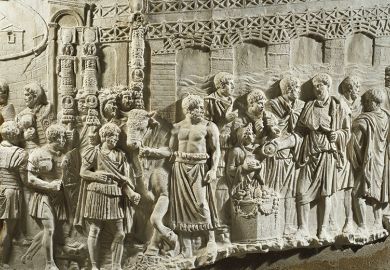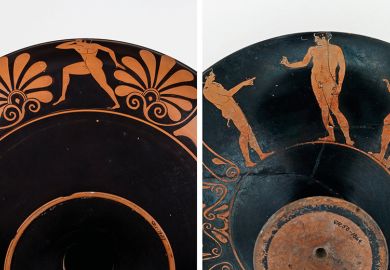When it comes to the ancient world, the general public can be surprisingly conservative – we know that we are watching a film about the Greeks and Romans because it looks as we think it should. The post-war era saw a golden age of “sword and sandal” films, which built on Hollywood’s fascination with antiquity from the very first silent movies, and used historical themes to explore current political tensions. Jeffrey Lieber takes the bold step of reading those films alongside the architecture of the same period, to bring out the dialogue between modernity and antiquity articulated in physical space as America sought to reinvent itself in the 1950s and 1960s.
He reads buildings with films, magazine covers, adverts and individual architectural careers to explore American architecture’s struggle with the classical and the modern, the democratic and the authoritarian. Yet, from this classicist’s perspective, the promised engagement with the ancient world never fully delivers. Lieber sees the titular Flintstone modernism as a mid-20th-century “quarrel of the Ancients and the Moderns”, expressing a tension between timelessness and the march of progress. Yet the actual analysis of how various case studies received and interpreted the classical past feels at times superficial. Given their shared interest in spectacle and the impact of visual design, pairing film and architecture seems a perfect fit; however, Lieber does not manage to catch up with the classical reception scholars who have analysed the interplay between ancient and modern in the films of this period.
There are glimpses of what might have been. Placing Walter Netsch’s Air Force Academy building in Colorado Springs (pictured above) next to the tomb of Hatshepsut in Egypt on one side, and adverts for Carduco Structural Wall Units’ “Great Walls” on the other, makes it clear how the Air Force buildings drew on ancient ideas of ceremonial and ritual purity, as well as the importance of mosaic murals in building design more generally. The continuing battle for ownership of the classical world is on show: the art historian Vincent Scully sought to uncover the “true” Greek style that captured the foundations of democracy, while Bruno Zevi dismissed the Parthenon as mere sculpture and lauded the daring of the Romans for building on a grand scale. Susan Sontag’s notion of camp is invaluable for capturing the mix of fun and seriousness in films such as Cleopatra (1963) and Edward Durrell Stone’s “flights of fancy”, including his Gallery of Modern Art at 2 Columbus Circle – indeed, to my mind there is more mileage for Lieber in camp than in Hannah Arendt’s comments on modernism, which form the backbone of his argument.
For all the delight to be found in discovering parallels between the idealised flawless human skin created by female beautification rituals and the smoothness of glass-clad tower blocks, though, I ultimately found myself wondering about the overall significance of Lieber’s amalgamated case studies. American post-war architecture certainly participated in a wider cultural conversation about what the ancient world still had to offer, both aesthetically and politically. Yet by recognising the multiplicity of answers to the question “is the ancient world still relevant?” Lieber has taken only the first step in unpicking this aspect of the broader cultural crisis.
Liz Gloyn is a lecturer in Classics at Royal Holloway, University of London. Her book on classical monsters in the modern world will be published next year.
Flintstone Modernism or The Crisis in Postwar American Culture
By Jeffrey Lieber
MIT Press
296pp, £27.00
ISBN 9780262037495
Published 9 March 2018
POSTSCRIPT:
Print headline: The old ones are the best
Register to continue
Why register?
- Registration is free and only takes a moment
- Once registered, you can read 3 articles a month
- Sign up for our newsletter
Subscribe
Or subscribe for unlimited access to:
- Unlimited access to news, views, insights & reviews
- Digital editions
- Digital access to THE’s university and college rankings analysis
Already registered or a current subscriber?







